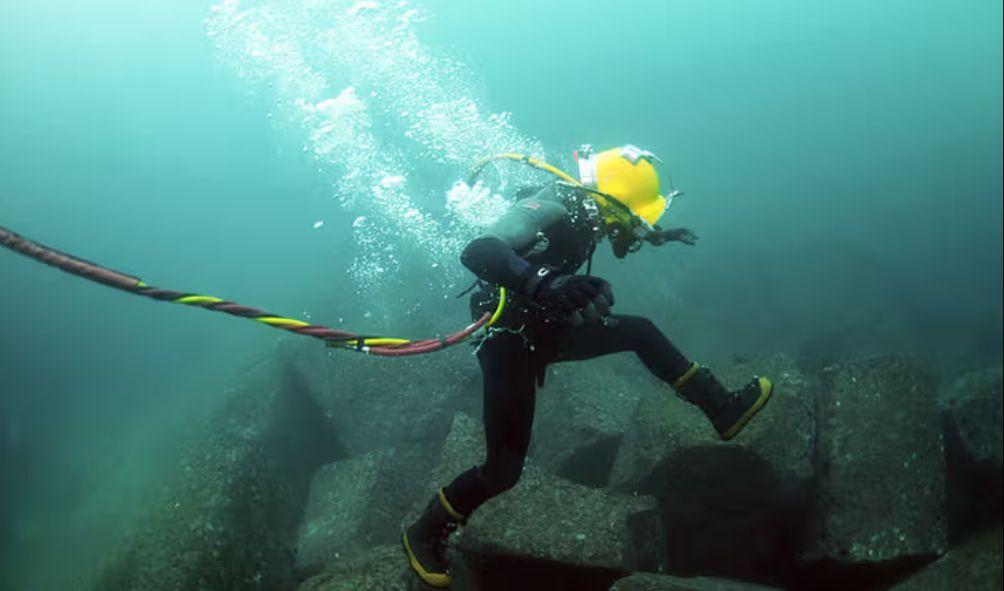Deep Dive: Unveiling the Undersea Cable Cuts Causing East Africa’s Web Woes
In East and South Africa, internet speeds have slowed down since Sunday due to damage to key subsea cables that supply broadband services across the continent via the Red Sea.
Both fiber and mobile broadband users are experiencing outages. However, there’s limited information available about the extent or cause of the damage. Internet service providers in the East African region are working to mitigate disruptions while waiting for the cables to be fully repaired.
At least two major subsea gateways providing connectivity to telecommunications networks in East and Southern Africa have been affected by the damage.
WHAT ARE SUBMARINE CABLES?
Subsea or submarine communication cables are fiber-optic cables laid along the seabed to transmit data, including telephone and internet traffic, facilitating telecommunications connections between continents globally.
In contrast to satellite technology, which communicates with unwired points, subsea cables are submerged using specialized cable-laying vessels.
Closer to shore, these cables are often buried beneath the beach to protect them from potential damage.
Given their pivotal role, any damage to these cables can lead to widespread internet disruptions, as they are the primary drivers of global internet connectivity.
According to TeleGeography, a U.S. telecoms market research firm, there are over 570 undersea cables worldwide as of early 2024, with submarine cables reportedly meeting 90 percent of Africa’s internet requirements.
The majority of these subsea cables are privately owned by telecommunication operators or investors, with significant funding coming from internet giants like Google, Meta, Microsoft, and Amazon, as highlighted in a 2016 TeleGeography report.
SUNDAY OUTAGE
In East Africa’s ongoing outage, reports indicate three cuts in three submarine cables fueling the region’s connectivity, alongside a malfunction in another cable system.
Ben Roberts, Liquid Telecom’s Group Chief Technology and Innovation Officer, disclosed issues with the Eastern Africa Submarine Cable System (EASSy) and the Seacom cables on Sunday.
EASSy spans 10,000 kilometers along Africa’s east and south coasts, boasting significant capacity and linking South Africa to Sudan via landing points in various countries including Mozambique, Madagascar, Tanzania, and Kenya.
Seacom, headquartered in South Africa, operates Africa’s inaugural broadband submarine cable system, spanning 17,000 kilometers along the continent’s southern coasts and providing connectivity to Djibouti, Kenya, Tanzania, Mozambique, and South Africa.
Roberts highlighted on Sunday the existence of unrepaired cuts in two other vital submarine cables in the Red Sea: the Europe India Gateway (EIG) and the Asia-Africa-Europe 1 (AAE-1).
The Europe-India Gateway (EIG) spans 15,000 kilometers, connecting various countries including the U.K., Portugal, Gibraltar, Monaco, France, Libya, Egypt, Saudi Arabia, Djibouti, Oman, United Arab Emirates, and India. Similarly, the Asia-Africa-Europe-1 (AAE-1) cable stretches over 25,000 kilometers, linking Southeast Asia to Europe through Egypt
ALSO READ:
- Kenya Owes Chebukati a Hero’s Farewell for ‘Saving’ Democracy – MP Declares
- HELLFIRE HORROR: Worshippers in Bomet Torch Granny Alive in ‘Satanic Purge’ Ritual(Video)
- Haitian Police Caught in Explosive Feud with Kenyan Peacekeepers? Officials Scramble to Deny Rift
- Raila Odinga’s 2027 Options After Shocking AUC Defeat
- Congo Frees Opposition Leader and Former President’s Ally Jean-Marc Kabund
To ensure continuous service, major telecom companies and ISPs often depend on multiple cable systems. This strategy allows them to redirect traffic in case one system encounters problems, thus preventing service disruptions.
The significance of having numerous submarine networks becomes evident when considering the potential impact of damage to any one of them.
According to Kenya’s Communications Authority (CA), a deep-sea fiber cut occurred at the Mtunzini teleport station in South Africa, affecting the Seacom and EASSy subsea cable channels.
In response, CA announced on Monday that it is closely monitoring the situation to maintain incoming and outgoing internet connectivity. Additionally, the authority instructed service providers to establish alternative routes for their traffic to mitigate the effects of the disruption.
CA further stated that while the East Africa Marine System (TEAMS) cable remains unaffected by the cut, it is currently being utilized for local traffic. Redundancy measures on the South Africa route have been activated to minimize the impact of the incident.
WHAT CAUSES DAMAGE?
Submarine cable faults have previously been ascribed to various human activities, such as fishing and anchoring in shallow waters near shorelines, alongside natural occurrences like earthquakes and landslides.
In March, an apparent underwater rock slid off the coast of Cote d’Ivoire, causing disruptions to multiple submarine cables that serve the West African region.
In February 2012, three submarine cables in the Red Sea were severed due to a ship inadvertently dragging its anchor.
Additional factors, such as missile launches, notably in the Red Sea amidst the ongoing conflict in Yemen, have also been cited as contributing to damage to submarine cables.
The Yemeni government has pointed fingers at Houthi rebels for targeting the subsea cables in the Red Sea, an accusation the rebels refute.
Instead, the Houthis attribute the damage to British and US military units operating in the area.
Deep Dive: Unveiling the Undersea Cable Cuts Causing East Africa’s Web Woes
